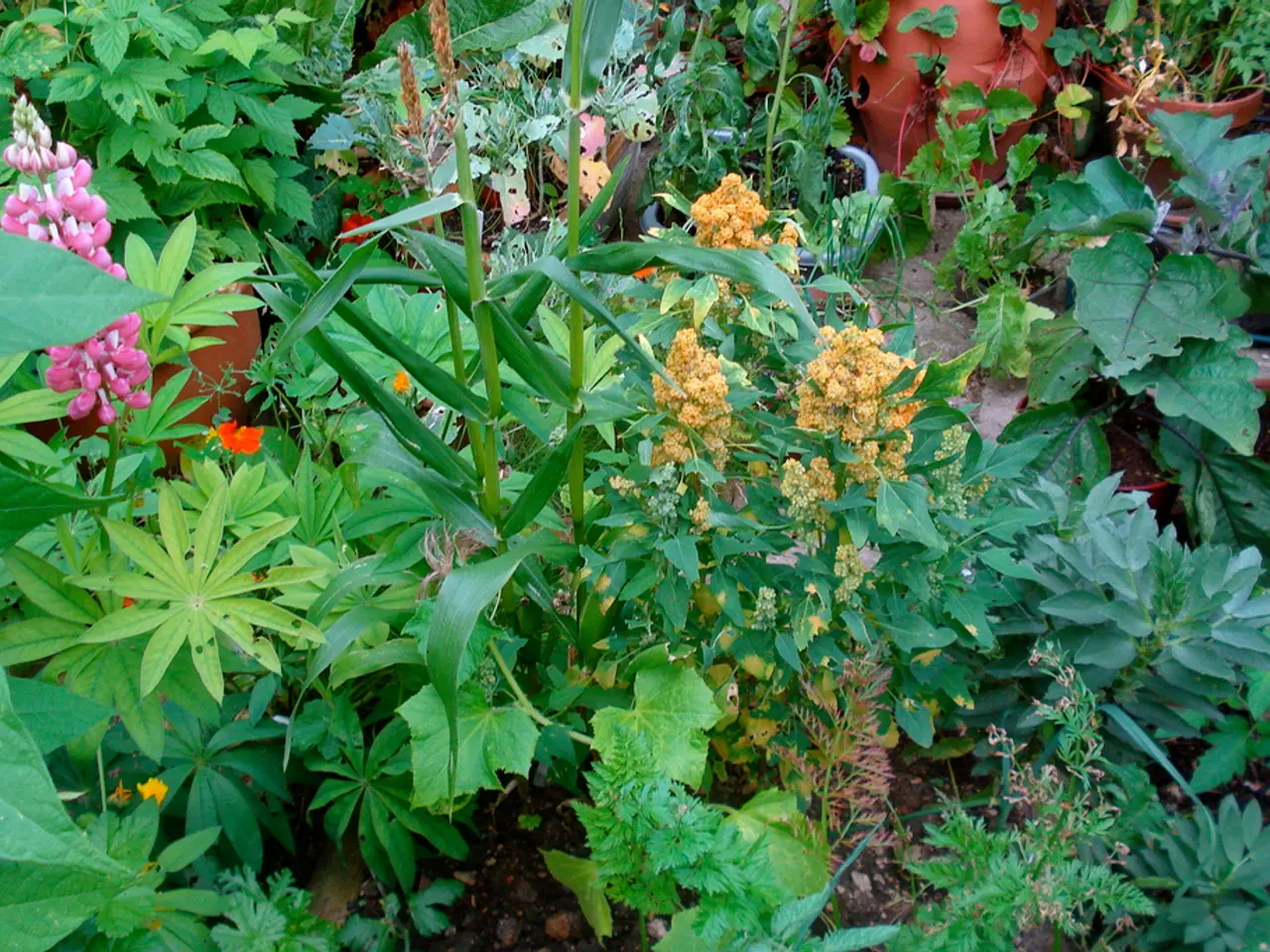Strategies for Vibrant Gardening: Maintaining Lush Growth Without Sapping Your Free Time
In the pursuit of a beautiful and functional garden that requires minimal effort and resources, research-backed tips can help create a low-maintenance paradise. This article offers advice on selecting the right location, using raised beds, choosing appropriate plants, and simplifying gardening tools to reduce workload.
Location Selection
Choosing the ideal location for your garden is crucial. Select a site that suits your climate and soil conditions. Observe your neighborhood or consult local garden centers to identify plants that thrive well in your area. Consider placing your garden in a location with natural water drainage or low spots, as this can facilitate creating a rain garden to manage runoff.
Raised Bed Usage
Raised beds are highly beneficial, especially on non-native or challenging surfaces like concrete. They allow for deeper, better-draining soil, improved water retention, and soil warmth, which enhances plant growth. Aim for at least 4 to 12 inches of soil depth in these beds to maximize plant survival.
Plant Selection
Favor hardy, drought-resistant, and native plants well adapted to local conditions, as these require less watering, pruning, and pest control. Perennials like lavender, hostas, and daylilies are good examples. Plant in large clusters or masses and layer plants in structural tiers (trees/shrubs, medium seasonal plants, and groundcovers) to suppress weeds and retain moisture naturally. Closely spaced plants form a "living mulch," further reducing maintenance.
Tools to Simplify Gardening
Use lightweight and ergonomic tools with padded, curved, or extendable handles to reduce physical strain. Manual tools like push mowers or reel mowers are low-maintenance, environmentally friendly, and easy to care for. Avoid specialized tools that are rarely used (like rototillers) by adopting no-dig gardening practices to simplify soil management.
Additional Maintenance Tips
Incorporate soaker hoses or an automated, drip irrigation system to water multiple plants efficiently. Mulching around plants with 3 to 4 inches of shredded leaves, grass, straw, or wood chips can help smother weeds, retain moisture, and regulate soil temperature. Mulching can also reduce the severity of diseases on plants and reduce soil moisture.
Incorporating these elements creates a sustainable, less labor-intensive garden that conserves resources while maintaining aesthetic and functional value. For more information on low-maintenance perennials, consult the guide offered by the Missouri Botanical Garden. If you have specific gardening questions, take advantage of the free resource "Ask Extension," which provides one-to-one expert answers from Cooperative Extension or University staff and volunteers in your state.
References
- [1] Steil, A. (2019). Gardening for the Environment. Iowa State University Extension and Outreach.
- [2] McDonough, K. (2020). Low-Maintenance Gardening: A Comprehensive Guide. University of Georgia Extension.
- [3] Missouri Botanical Garden (2021). Rain Gardens: A Guide to Gardening with Rainwater.
- [4] University of Georgia (2021). Raised Bed Gardening: A Guide to Building and Maintaining Raised Beds.
- [5] National Gardening Association (2021). Gardening for Gardeners of All Ages.
- To optimize a garden that requires minimal effort, choose a site with the right climate and soil conditions, such as low spots for rain gardens or locations with natural water drainage.
- Raised beds, especially on non-native or challenging surfaces, offer benefits like deeper, better-draining soil, improved water retention, and soil warmth that promote plant growth.
- Select hardy, drought-resistant, and native plants for your garden, such as lavender, hostas, and daylilies, which are well adapted to local conditions and demand less watering, pruning, and pest control.
- Adopt simple gardening practices, like using lightweight and ergonomic tools with padded handles, and employing no-dig gardening techniques to reduce physical strain and simplify soil management.
- For effective watering and reduced maintenance, employ soaker hoses or an automated, drip irrigation system and mulch around plants with 3 to 4 inches of shredded leaves, grass, straw, or wood chips to retain moisture and regulate soil temperature.




